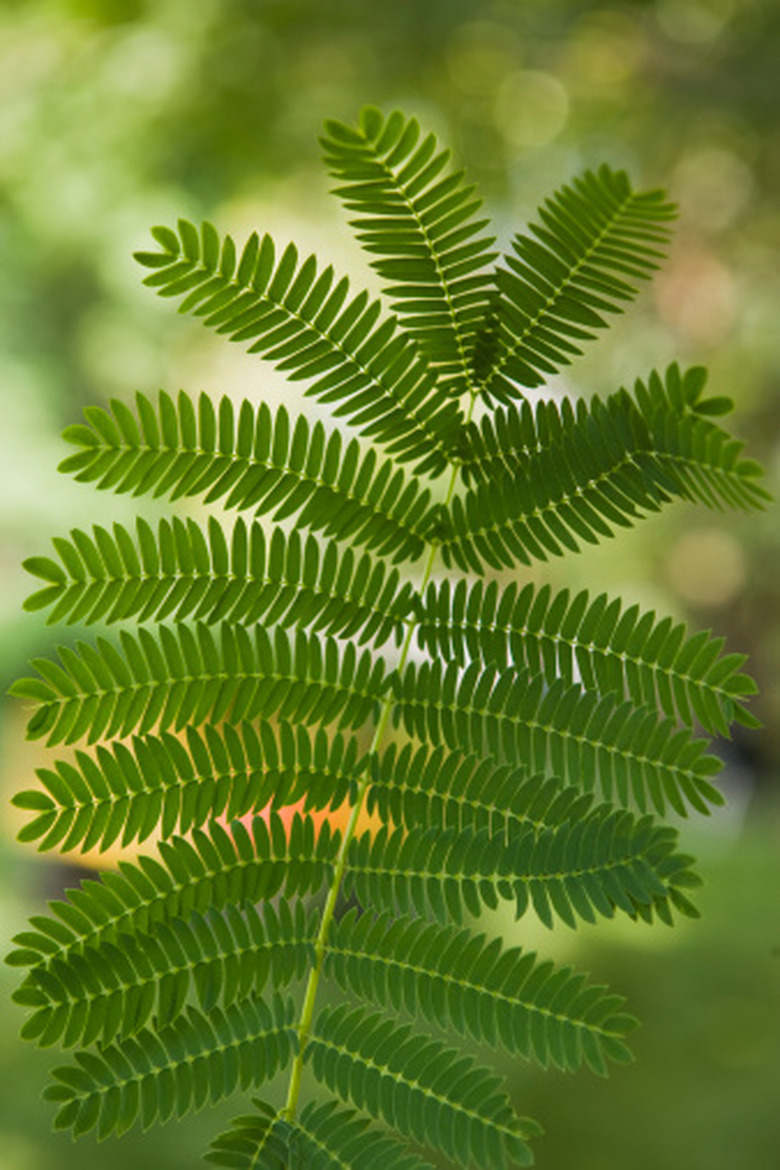What Eats Ferns?
Ferns produce a toxin in their leaves that discourages most vertebrates from eating them, although dinosaurs ate these plants in large quantities before their extinction. Most insects and animals that eat ferns only eat specific species of fern during specific seasons.
Mammals
The European woodmouse, or Apodemus sylvaticus, eats only the fertile spores of the European fern Culcita macrocarpa, and only between December and January. The short-tailed bat, Mystacina tuberculata, also eats fern spores. Deer and the eastern cottontail rabbit often eat young bracken ferns.
Birds
During the winter and early spring, the Azores Bullfinch, or Pyrrhula murina, eats the high-fat spores of three specific species of fern. In the spring and early summer, the bullfinches switch to three different types of fern. During the spring, the birds sometimes eat the leaves of the ferns as well.
- Ferns produce a toxin in their leaves that discourages most vertebrates from eating them, although dinosaurs ate these plants in large quantities before their extinction.
- During the winter and early spring, the Azores Bullfinch, or Pyrrhula murina, eats the high-fat spores of three specific species of fern.
Insects
The sawfly and several species of caterpillar eat the bracken fern. The Peruvian fern insect exclusively eats ferns. Other insects that eat ferns include aphids, whiteflys, cutworms, beetles, crickets and grasshoppers.
Fern Facts
Ferns are one of the oldest plants on Earth, with over 10,000 known species to date, and an estimated 5,000 more that have yet to be discovered. Like most other plants, they have stems and leaves. Additionally, ferns never flower and don't rely on seeds to reproduce. Instead, ferns procreate through their spores, which open up when they're ripe and spray outward to spread. Some are able to adapt to less suitable terrain, but most ferns tend to be sparse in high altitudes or dry conditions. Each frond contains a long, main stem from which small divisions, called pinnae, grow. Their primary contribution from an economic standpoint is to the horticulture industry, which cultivates millions of fern plants to sell for personal use.
- The sawfly and several species of caterpillar eat the bracken fern.
- Instead, ferns procreate through their spores, which open up when they're ripe and spray outward to spread.
References
- BBC: A Mouse that Eats Ferns like a Dinosaur
- Fern Feeding Ecology of the Azores Bullfinch Pyrrhula Murina
- Small Life: Supplies for Stick Insects
- Fern Grower's Manual by Barbara Joe Hoshizaki, Robbin Craig Moran
- USDA Forest Service: What Are Ferns?
- American Fern Society: About Ferns
- Encyclopedia Brittanica: Fern
